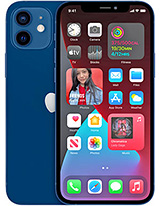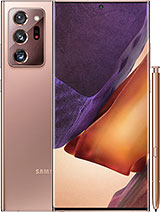iPhone 12 Pro Max vs. Galaxy Note 20 Ultra camera comparison By CNET
It's that time again camera comparison time. This is the iPhone 12 Pro max versus the Galaxy Note.20 ultra I've already compared the regular 12 pro to the note 20 ultra. You can find that video in the description below, so I'm not expecting to many surprises this time around, except there are a couple more tricks up. The 12 pro max's sleeve, including sensor, shift image stabilization as well as a 2.5 times, optical zoom, oh yeah, and one more thing everything you see in this video has been shot on. One of these two phones long story short. These phones both produce great looking photos on all three rear cameras in good lighting, color and dynamic range is excellent, with smart hdr3 on the iPhone or HDR on the note, 20 ultra producing balanced shots.
The note has a 108 megapixel sensor on the main camera and, although you can take 108 megapixel shots for more scope to crop or for shallow depth of field effects, most of the time you'll probably stick to 12 megapixels. That's because the 12 megapixel shots take advantage of pixel binning, which is essentially giving you the most detail in a more manageable file. The iPhone's 12 megapixel sensor uses another computational trick called deep fusion on all its cameras to bring out more detail and texture. I think it's really hard to separate them when looking at the 100 crop in good light, they both retain detail really well, but overall, I think in bright light. The note just takes the edge, but I did notice in lower light that the combination of sensor shift stabilization and a faster maximum aperture of f 1.6 on the iPhone helped get a sharper shot than the note. Now.
The note has a scene optimizer and the pro max has seen detection to optimize photos based on the subject, and in this shot at sunset, you can really see how each treats the landscape differently. The note is much more pink while the iPhone is more blue and the ultra-wide camera is great on both. Although there is a bit more distortion on the note's photo just like we saw in the comparison with the regular 12 pro and in low light, when not using night mode, both show a fair amount of noise for the most flexibility. With your photos, the note can take raw photos in the stock camera app, while the iPhone will soon support apple's pro raw format, which is coming with iOS 14.3, but it wasn't available at the time of recording this video moving to the telephoto camera. The pro max has a 2.5 times optical zoom, compared to the five times optical. On the note, this is one times and then five times on the note- and this is one times and 2.5 times on the iPhone- you can go as close as 50 times on the note, with hybrid zoom or 12 types digital on the iPhone, but I don't suggest you use either unless you really need to for this shot of the Golden Gate Bridge. I really loved that the five-time zoom on the note could get me closer, so I could get much better framing than the same position on the iPhone, but you'll also notice that the note's color treatment is quite different on the telephoto lens compared to the iPhone most of the time the 2.5 times on the iPhone wasn't as restrictive as I had first thought, and it's actually the most advantageous in video. Try shooting it five times on the note and look you'll really wish that you brought a tripod with you, whereas the 2.5 times on the iPhone is much more manageable and smoother when filming handheld. Now, let's look at some portraits, the notes shot, has a cooler white balance overall and the skin tones are a bit more accurate on the iPhone which is actually the same result.
I found in the regular 12 pro versus note, 20 ultra comparison overall, the fall off to the blur looks a bit more natural on the iPhone to me or closer to what it would look like if I took this photo on a DSLR. While the note has great edge detection, but it can give your subject a little more of a cutout, or I guess, a computer generated blur which actually, you might prefer for some shots for the front camera. The iPhone's white balance and exposure is more pleasing to me and the shots retain a little more detail like you can see on my hat, but dynamic range overall is actually better on the note, because you can see some sky in these selfies, which is often completely blown out on the iPhone. The iPhone also lets you take night portraits, which keeps your subject sharp and well lit, while blurring out the background. Now the note doesn't have an equivalent, so you have to take a regular night mode photo, but then you lose the blurred background effect and for low light and night mode shots on the main rear camera.
Both phones do a great job and honestly, I find it hard to pick a favorite on the ultra-wide lens. Both phones are close, but I actually prefer the night mode effect on the note, as it brightens the scene a little more and the LIDAR scanner on the back of the iPhone means that autofocus in low light is super snappy, and it actually feels a lot faster than the note moving to video recording. I found the sensor shift stabilization on the iPhone particularly helpful when I was filming anything handheld. Now, here's a walking shot filmed at 4k60 on both phones with the sensor shift on the iPhone and optical image. Stabilization.
On the note, the note also has a software-based stabilization system called super steady, but it's only at 1080p. Now in this clip, the iPhone is still using its sensor shift stabilization. Both of the phones are producing a pretty smooth video, but the image looks quite washed out, and a bit over processed on the note, and it actually looks pretty different from the 4k image. From the note 2. , the iPhone can also film HDR video in Dolby Vision, and the video looks perfect when played back on a supported screen like on the iPhone itself.
Now the note can also record in HDR, 10 plus, and it also looks great on its screen, although it is limited to recording at 4k 30. Now these clips in the video that you're seeing are all filmed in standard dynamic range as you're, probably not watching this on a HDR screen. And finally, the note 20 ultra offers live, focus, video and pro video mode with full exposure and mic controls, a histogram frame rates and 8k recording, which actually looks pretty good. Now you can do some of this on the iPhone 2. Obviously, not the AK recording, but you will need a third-party app for a lot more control, you've seen the photos and videos and, let's be honest, the real winner in this comparison is actually you and me, as consumers, because these phones are super powerful, photographic tools and I just love using both of them.
But there are a few factors to think about. If you are choosing between the two and what sort of photos and videos you want to take might sway your decision one way or the other zoom, for example, is clearly stronger on the note 20 ultra. If you want five times and even 10 and 20 times, hybrid zoom are excellent. On the note the iPhone's 2.5 times optical zoom is much better than any other iPhone before just doesn't get you as far as the note does, and overall I think it does a great job for video, especially if you want to use your telephoto lens for shooting anything film when it comes to general photos on both the ultra-wide and the wide lens the HDR effects. The dynamic range is excellent on both of them and I think detail is superb.
I find it really hard to choose a winner. Overall, there night photos and low light photos. I kind of trade as two separate things, because night mode is like a computer generated or an effect really, and I think it looks a little better or more pleasing to me on the note. But the iPhone in general in low light is fantastic. Thanks to that sensor shift stabilization system and a wider maximum aperture just gives you a lot more flexibility when you are hand holding shots and night portraits, look so cool, portraits and selfies again a tough one to separate, because this is all personal preference.
I do prefer the look of the iPhone and I think the skin tones are a little more accurate. Overall video is a tough one to call the note has so many extra features on board and 8k recording, which is kind of future proofing you in a way, but the iPhone has the censorship stabilization that gives you super smooth results, and I really like the picture profile. It's just super consistent across all frame rates, resolutions and cameras as well thanks, so much for watching hope you like this comparison, let me know which phone you preferred in the comments below and also let me know what other camera comparisons you want to see. Next.
Source : CNET



























